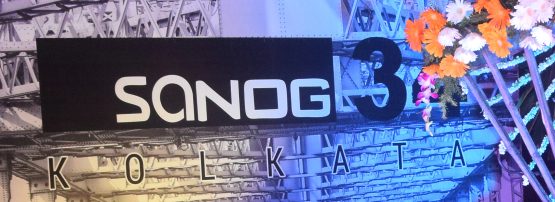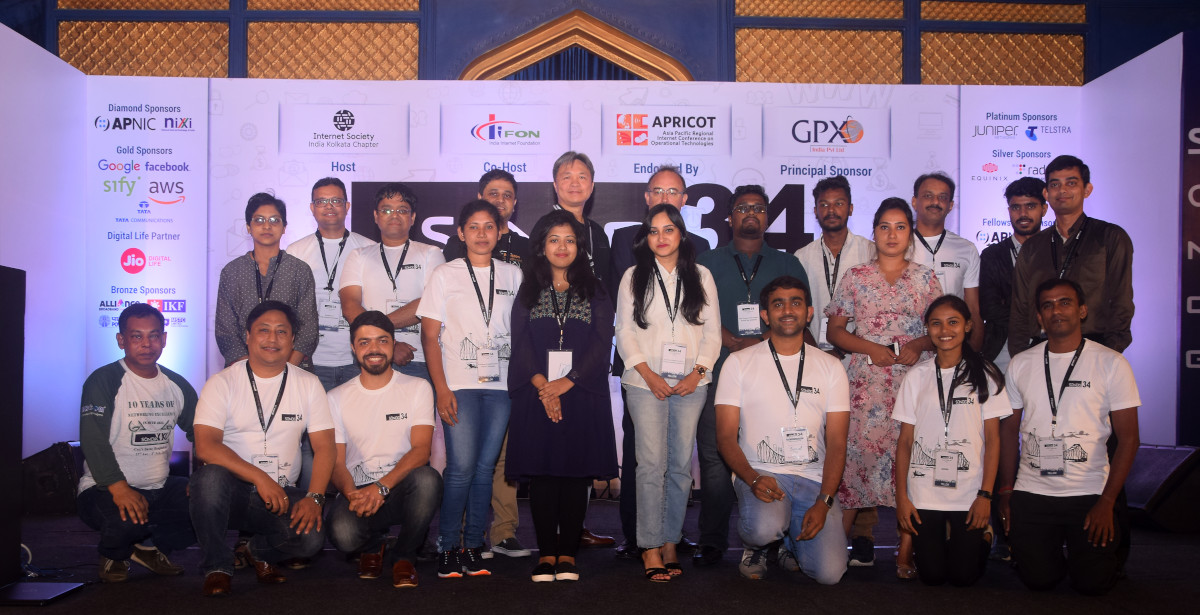
At the recently concluded 34th South Asia Network Operators Group (SANOG 34), it was interesting not only to hear about the evolution of digital infrastructure, technology and the economy in South Asia, including the opportunities it presents to network operators, but also to hear how community-led national Network Operating Groups (NOGs) in South Asia are working to build technical community knowledge, capacity and engagement in their respective economies.
SANOG, which was set up as a sub-regional, community-led initiative in 2003, has played a significant role in bringing operators from the region together for knowledge sharing and cooperation. It is a biannual event, rotated among economies for maximum reach and participation.

Figure 1 — A group of participants at SANOG 34.
While the NOGs of developed economies in the Asia Pacific began forming in the late 1990s, the NOGs in South Asia are quite recent: Bangladesh (bdNOG) and Bhutan (btNOG) were set up in 2014; Nepal (npNOG) in 2016; Sri Lanka (LKNOG) in 2017; and India (INNOG in 2017).
The objectives of these NOGs are to encourage knowledge sharing within their respective economies, and discuss global and regional technical developments, while addressing local requirements and issues. This, in turn, helps members of the operator community acquire the necessary skills to equip them for the present and the future. NOG meetings also provide a common ground for networking among participants, which helps in the exchange of ideas and thoughts. While most of the NOGs in South Asia have an annual event, it is only bdNOG that is held twice a year. The NOG meetings are normally rotated across cities in order to cater to more people.
While most NOGs organize both workshops and conferences during their events, depending on the requirement of the region and availability of trainers, the number of conference and workshop days at a NOG meeting vary: bdNOG has a half-day conference and four days of workshops; INNOG has a one-day conference and three days of workshops; npNOG has a half-day conference and three days of workshops; and LKNOG has a one-day conference and a one-day workshop.
Topics for discussion and training are normally decided based on global and regional trends, keeping domestic requirements in mind. IPv6, IXPs, MPLS, DNS, routing security, network monitoring and management and SDN are some of the workshop topics you can expect to find at a NOG meeting in South Asia.
Most NOG meetings are paid entry events, with an average of around 150 participants attending.
We can look to the larger and more established NOGs in the Asia Pacific region for inspiration for what we want our South Asian NOG meetings to become. Holding hackathons and expanding the topics of discussion to more cutting-edge topics like next-generation data centre architecture and segment routing are just two ideas. Some very large NOGs are even able to run meetings without registration fees, attracting large numbers of attendees.
To encourage participation, NOGs such as LKNOG, btNOG and bdNOG have provided fellowships. As women and youth are still less represented in such meetings, diversity initiatives have been taken by NOGs in the sub-region, including providing fellowships for women and young students in btNOG; organizing a networking panel for women, to promote women in tech at LKNOG; and so on.
While most of the NOGs aspire to increase their participation further and provide fellowships to deserving candidates, they face issues such as the uncertainty or inadequacy of sponsorships and unavailability of trainers (especially local). NOGs in South Asia can be particularly hindered by these issues.
Despite the odds, however, the NOGs are finding innovative ways to encourage more participation and help build a community of trained and knowledgeable network operators, who are connected and can support one another when required.
Amrita Choudhury is the Director of CCAOI, an organization involved in Internet Governance – Policy, Engagement and Research. She is also President, Internet Society India Delhi Chapter.
The views expressed by the authors of this blog are their own and do not necessarily reflect the views of APNIC. Please note a Code of Conduct applies to this blog.
